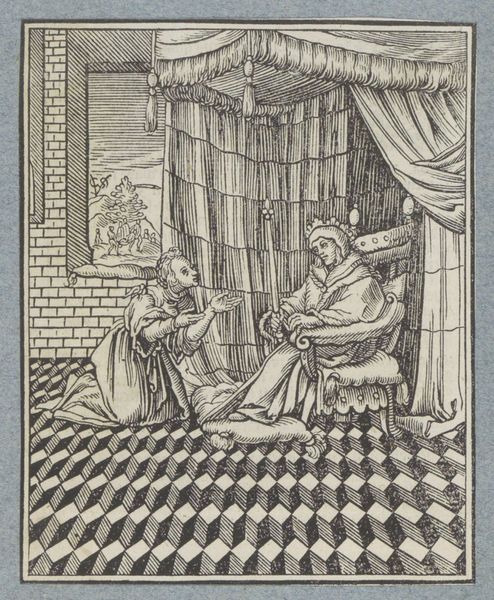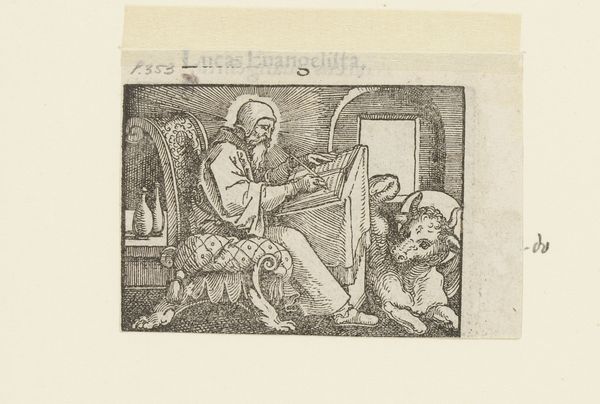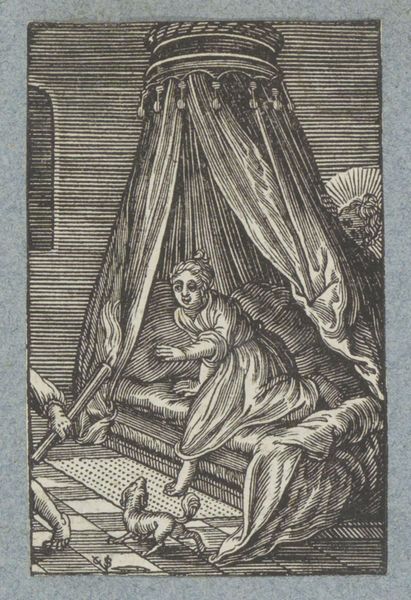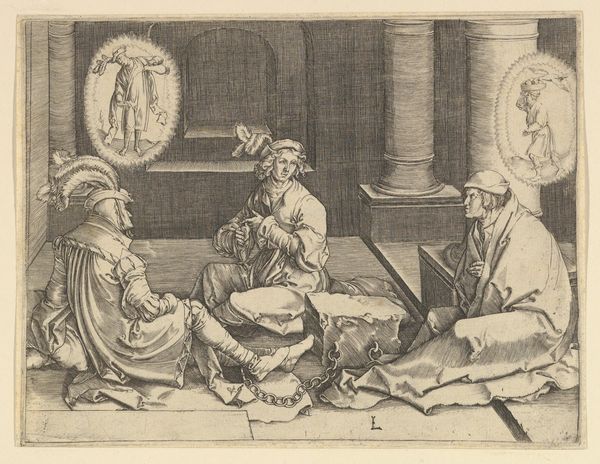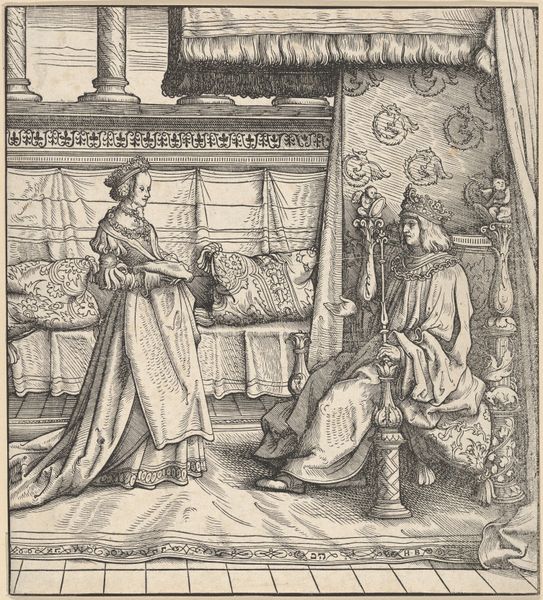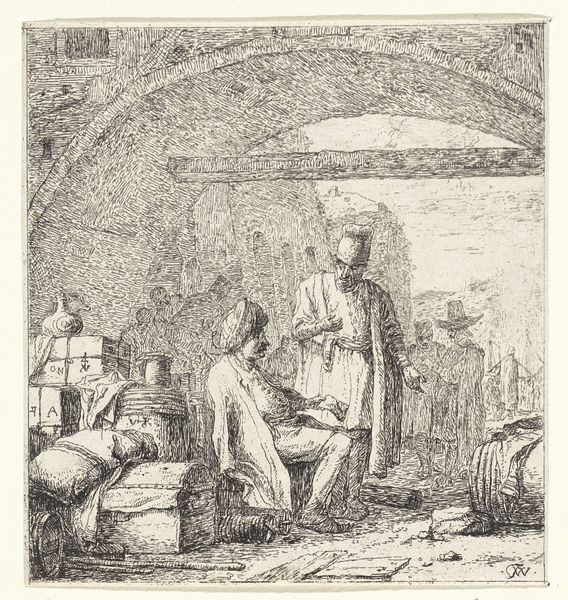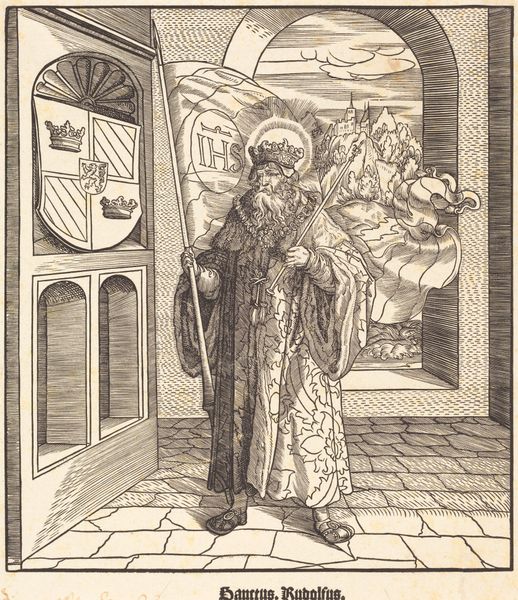
Book 3, Fable 4: the two pigeons (Les deux pigeons) 1719
0:00
0:00
drawing, print, engraving
#
drawing
#
baroque
# print
#
pen sketch
#
figuration
#
pencil drawing
#
line
#
genre-painting
#
engraving
Dimensions: Sheet (Trimmed): 3 1/8 × 3 13/16 in. (8 × 9.7 cm)
Copyright: Public Domain
Curator: This is an engraving by Nicolas Henry Tardieu, from 1719. It is titled "Book 3, Fable 4: the two pigeons." Editor: It strikes me as rather intimate, doesn’t it? The way the woman is seated on that plush sofa, seemingly lost in thought, with the curtain drawn. Almost theatrical. Curator: Indeed. The woman depicted appears to be in the midst of writing a letter, or perhaps a journal entry. And notice the two pigeons present. Do they call to mind any emotional themes for you? Editor: Absolutely, immediately it brings to mind the constraint imposed upon women during that historical moment, as pigeon, representing that sense of not being free. There’s a certain performativity embedded in such domestic scenes. Women are writing within defined spaces that in effect control their narratives, their subjectivities. It’s about more than the text itself; it’s about the broader societal constraints dictating its creation. Curator: A powerful reading, indeed. And looking at it through the lens of symbols, one could say that pigeons in art often carry themes of love and companionship. But given the specific context of a “fable,” do you suppose they might indicate themes of codependence? This era leaned so heavily on easily-readable iconographic language. Editor: Perhaps. The staging of the woman herself also adds a layer: observe the barely-covered bosom, signaling a level of vulnerability or even perhaps, acquiescence. I question what her choices are. Curator: Interesting interpretation. It seems you view this as not merely a snapshot but a staged scenario meant to convey deeper complexities about that historical era? Editor: Precisely! These interiors are carefully cultivated spaces where power, gender, and social performance are negotiated through material culture. Curator: Looking closer, I see that Tardieu does quite remarkably achieve varied textures through subtle line work—the sheen on the curtains compared to the softness of the upholstery, and even that rather detailed wallpaper behind! Editor: It makes you wonder what truths—or what acts of resistance—might be penned within such gilded cages. Thank you, Tardieu, for giving us more than one lens through which to perceive the truth. Curator: I agree. And it reminds us that the resonance of an artwork often lies in what it silently holds rather than explicitly declares. Thank you for lending voice to this particular silence today.
Comments
No comments
Be the first to comment and join the conversation on the ultimate creative platform.

